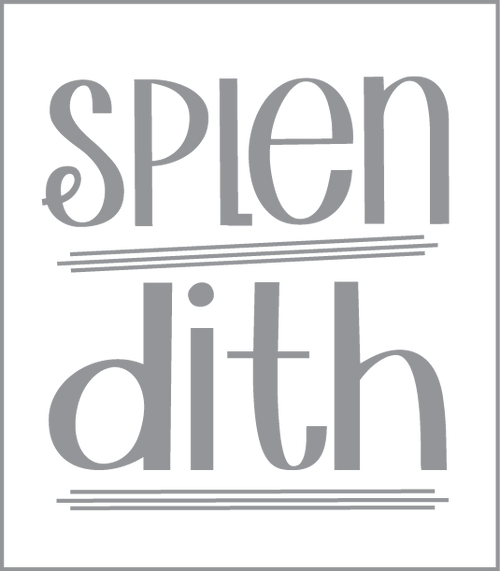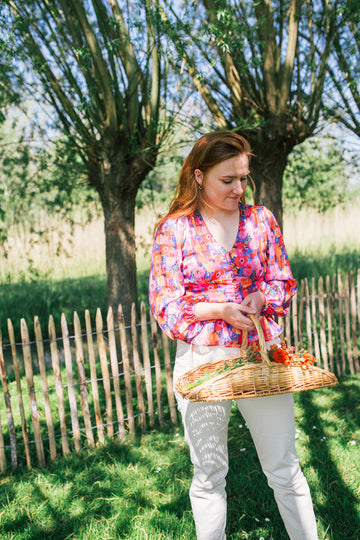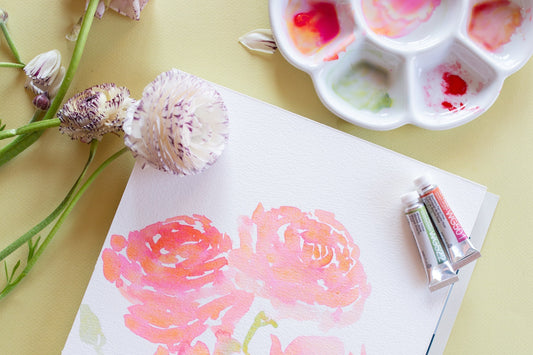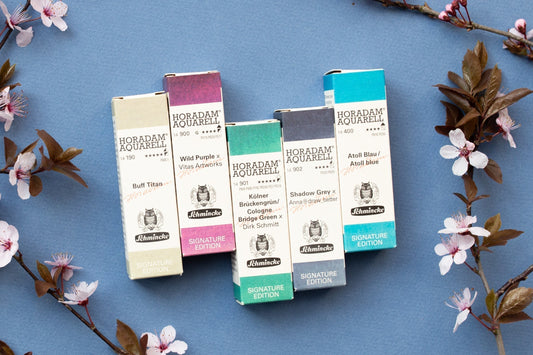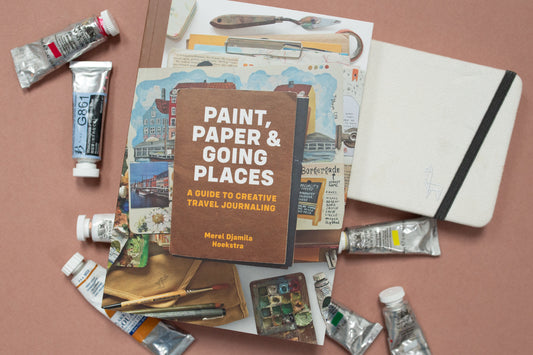There are many types and brands of colored pencils. What is the difference? As with graphite pencils, you can at least observe the hardness from the design of the pencil in HB, B or H. With colored pencils, the hardness of a pencil differs per brand. A number of brands have multiple collections of colored pencils, each with different hardness and properties. From professional brands you can purchase pencils in different sets, but often all pencils can also be purchased separately. So you can also choose to put together your own collection with your favorite colors!
What types and brands of colored pencils are there?
There are many brands that make beautiful colored pencils. However, there are a number that really stand out in terms of quality. These brands have nice color selections, a specific formula for the core and so on. The more luxurious brands such as Faber-Castell, Prismacolor, Derwent, Caran d'Ache and Holbein are an example of this. Each brand has a specific formula that sets them apart from the rest.
If you try different pencils, you will see that they all feel different. The colors are different, the texture is different and not every paper is equally suitable. Below I will discuss a number of formulas.

Wax pencils
In general, unless otherwise stated of course, almost all pencils are wax based. These are the 'normal' colored pencils that you can buy in all kinds of stores. The core of wax pencils is made of a hard wax. It varies a bit per brand how many layers you can build up with wax pencils, but after a few layers you will notice that there is a layer of wax on your drawing. After this, no more color is picked up and you can, therefore, no longer build up.
Oil-based pencils
With oil pencils you can easily work and blend in multiple layers. The best known oil-based pencils are the Faber-Castell Polychromos. These pencils contain a lot of pigment, cover well and are easy to blend. The core of the Polychromos is harder than the average pencil, but not too hard. Because the point remains sharp for a long time, they also last a very long time!
Watercolor pencils
Watercolor pencils contain a water-soluble binder, making it easy to edit the colors with water after application. This means that watercolor pencils can be easily combined with pans or tubes of watercolor paint. You can actually use these pencils in three ways. You can draw with it just like a normal colored pencil or create a watercolor effect by adding water. You also have several options: you can dip the pencil in water and then start drawing, or you can use a brush (or aquabrush!) with water.
When drawing with watercolor pencils, you don't have to worry about filling in all the areas completely. If you want lighter areas, keep them empty! You can then use the water to blend out the colors beautifully. When your layer is dry, you can apply another layer to get more depth and contrast. Do you want intense details in your work? Then dip the pencil in the water before adding the details. You will see that the color is brighter than when you use the pencil dry. This makes blending more difficult, so do this when your work is almost finished. Tip: make a color chart of your watercolor pencils, because the colors look different dry than when they are wet.
Pastel pencils
Pastel pencils are very soft pencils, with which you can also create soft effects. Because they are so soft, the marker can break quickly. If you mix pencils, the colors become less sparkling. It is best to use pastel pencils on paper with a grainy structure, because otherwise the pigment will not adhere well. It's fun to experiment with pastel pencils on colored paper! Because they are slightly harder than pastel chalk, pastel pencils are very suitable for adding details to a drawing you have made with pastel chalk. Make sure you work from light to dark with pastel pencils. Layering dark colors over lighter colors makes the dark shades pop. If you do it the other way around, you will get a stain and you will not be able to get the light color to cover properly.
Holbein
Holbein pencils actually fall into several categories mentioned above. The core of Holbein pencils is made of a mix of pigments, wax, oil and fats. This unique combination ensures that they are very nice colored pencils to work with. They are creamy, but not too soft or hard. In terms of hardness, they are between the Polychromos and Prisma pencils. Holbein has released a nice product especially for lovers of watercolor effects: the Holbein Meltz. This is a solvent that allows you to use your colored pencils as watercolors! The Meltz is available in a jar, but also in a pen.
Color fastness
Color fastness is important for good colored pencils. Pencils with a high color fastness contain a lot of pigment that can withstand light well. This is important because you want your work to remain beautiful for a long time and not to fade due to (sun)light falling on it. With colored pencils that are not lightfast, the color will fade or even disappear completely after a while.
Blending with colored pencils
By blending your colored pencils you can create beautiful unique colors and give your work that little bit extra. Colored pencils that blend well are the Faber-Castell Polychromos and the Holbein pencils. Do you want to start blending with your colored pencils? Of course you can do this with, for example, some kitchen paper or a feather duster, but there are other different techniques, each of which gives a different result.
Blending with a solvent
You can blend colored pencils nicely with a solvent such as turpentine. The colors become more intense, you see less of the pencil marks and the colors blend nicely into each other.
Colorless blender
Some brands have a colorless blender in their range, such as the Meltz from Holbein. When you apply multiple colors, you can use the blender to fade the colors nicely and blend them into each other.
Polishing
When you polish, you layer colored pencils by applying a lot of pressure to the pencil. The colors merge, as it were, and become more intense, while you smooth the surface.
With a white pencil
With a white or other light colored pencil you can add highlights while also polishing.
Working in layers
You can work very nicely in layers with colored pencils. Not all pencils are suitable for (extensive) layering. You can use layering to get beautiful vibrant colors, to give depth to your work and to create highlights. By blending you can make multiple layers blend nicely into each other.
What material do you use the pencils on?
In general, you will use colored pencils most often on paper. The paper you use depends on the type of colored pencil you use. Watercolor pencils are best used on watercolor paper. This is thicker paper and is suitable for using water. Use hot pressed, then you have a nice smooth surface. For wax pencils and Holbein pencils, Stonehenge paper and Bristol paper are recommended.
What should you pay attention to when purchasing colored pencils?
If you are going to purchase new colored pencils, there are a number of things you can pay attention to. There are a number of points on which you can recognize good quality pencils. One of the most important of these is the color. Professional pencils give off a lot of color and often have very vibrant colors to choose from, because they contain a lot of pigment in the core. Another important factor is how well the pencil glides across the paper. Good pencils glide very easily over your paper. They are also easier to blend!

Don't forget to purchase a good sharp pencil sharpener with your colored pencils. A good pencil sharpener will ensure that your pencil lasts longer and of course you want that if you have bought nice pencils!
Conclusion
When it comes to choosing colored pencils it all depends on what you are looking for. Hopefully I have given you some more insight into what types of colored pencils there are and what you can do with them! What are your favorite colored pencils?
You can shop all colored pencils here .
Love,
Judith
